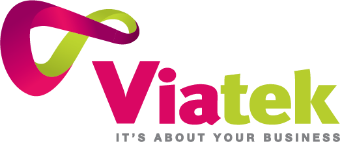The impacts of 2020 now have companies and business leaders assessing if remote working should be a more permanent strategy. For most, the answer is somewhere more in the middle – a hybrid model that combines remote and co-located work.
According to a study by HP, 56% of employees say they want the option to work remotely after the pandemic is over. But after weeks or even months of being cooped up at home, many are eager to make a clearer distinction between their working lives and personal lives. This suggests that offices are here to stay – albeit as a supplementary workspace. Now that companies and employees have realised the benefits of flexible work options, remote work isn’t likely to be going anywhere either.
Given that the hybrid workforce model is likely to prevail, what do you need to enable collaboration between in-office and remote workers?
Structure and flexibility go hand-in-hand
By now, most companies have realised the productivity and morale advantages of giving employees the flexibility to work from home, or adjust their hours to suit their schedule. Consequently, more than two-thirds (77%) of CEOs say they plan to increase the use of digital communication tools within their business, so employees can collaborate effectively wherever they may be.
But flexibility doesn’t equal free-for-all, and decision-makers will need to put guardrails in place for how in-office employees can interact effectively with remote workers, and vice versa. Some companies may find it makes sense to set rules around:
- Whether certain teams should be in the office on the same days
- Whether some or all employees can work from home on specific days each week
- Whether certain meetings, such as project kick-offs, need to be held in-person
- What tools or dedicated collaboration hubs should be used for different projects or circumstances
With the right structure in place, businesses stand to benefit from an efficient, productive hybrid workforce – but all this must be underpinned by…
Technology-driven collaboration spaces
With fewer workers in the office, office spaces will undergo a transformation with real estate that can be dedicated to hybrid conferencing spaces. For these to be effective, however, they need to be equipped with the right technologies to enable collaboration between in-office and remote workers.
The capability to easily view, share, and interact with content between in-person and remote participants will be essential. Sharing screen information from laptops and whiteboards, as well as collaborating with shared documents and applications, is equally important.
HP, for instance, has defined specific room personas that support the hybrid workspace:
- Focus rooms: one- or two-person rooms to accommodate ad hoc meetings and conversations with remote participants from the office.
- Open huddle spaces: areas designated in the office environment to host team meetings, stand-ups, and quick ad hoc gatherings to collaborate and communicate.
- Small conferencing rooms: enclosed rooms to typically support up to three or four people, with a maximum of six.
- Medium and large conferencing rooms: rooms to accommodate between 6 and 20 people, generally reserved for meetings and video conference sessions.
Based on these configurations, HP offers purpose-built conference room solutions centred on the HP Elite Slice G2 portfolio. The HP Elite Slice G2 is an all-in-one device that combines compute, codec control, and inputs/outputs to standard AV peripherals to make it simple, scalable, and versatile to deploy into any size of conference room.
As the pandemic subsides and some employees return to the office, now is the best time to prepare for enabling collaboration between in-office and remote workers. At Viatek, our partnerships with global leaders such as HP allow us to deliver our clients the best solutions, technology and services available in the market today. Contact us today to discuss how we can support the needs of your hybrid workforce.






